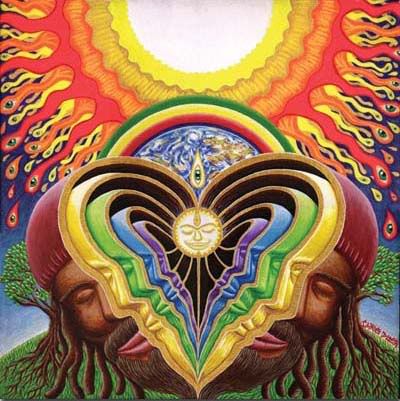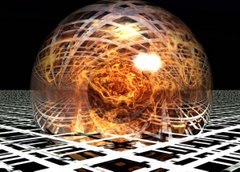
Distinguishing between identity and personhood is a very complex process. There are many different angles to analyze. Many philosophers have attempted to establish a credible definition of what the soul exactly is. There are many skeptics in the world that believe we are our body, and cannot put faith in the belief of having a soul because there is no physical proof. John Perry wrote a story The First Night about a philosophy teacher on her death bed that would like to find comfort in the thought of having a soul, but is not convinced because she feels that her body is her identity, and she will die with her body. Her thinking is that her consciousness resides in the body rather than the soul that her friend arguing for throughout the story. The body theory suggests that one’s own identity is a function of nothing more than the identity of one’s body. Dualism is a theory created by Rene Descartes that argues that mind and body must be two distinct substances. Although there are good reasons for thinking the body and mind are not the same thing, there are huge problems in thinking of them as distinct. They are difficult to separate for the reason that the mind and body interact, even though they are two completely different kinds of substances. The mind and the body possibly aren’t two substances at all; maybe they are two different aspects of the same substance. Perhaps Descartes approached the question wrong, and mind and body are different, not unrelated substances. While it is easier to consider the body substance, the mind is a more difficult concept in that aspect. John Locke explains in Of Identity and Diversity that experience defines an individual. This dynamic finding was that all knowledge was founded on and derived from experience. Locke’s conclusions and arguments on personal identity were so powerful; they have become part of western thinking. He says that the identity of consciousness is not substance; this is what makes personal identity. For Locke, the idea of substance is the something, we know not what, which attempt to glue the causes of our ideas together. Memory plays a major role in Locke’s theories. He contributed the memory theory, which says that self-identity must be intimately tied to our mental characteristics and that personal identity is based on self-consciousness. He states, “I am the same as my younger self if I can recall the actions of this more youthful me.” David Hume believes that nothing is responsible for our identity through time because it is only fiction. Hume wrote Of Personal Identity, as his views differ from Locke’s. He contends that as we attempt to interpret ourselves, we encounter disconnected and distinct perceptions. As we try to make sense of these thoughts and ideas, we create our self-image. When distinguishing the mind, we must understand that the mind is not a thing—we define something as having a mind when it is capable of activity and responsibility. Identifying the mind is a foundational beginning in answering this question. In order to understand the connection the mind has with the body we must first have a good grasp of what the mind is. One belief is that the characteristic feature of the mind is that it is directed at objects other than itself, but perhaps this isn’t so much a truth about the mind rather a truth about how we view agents with the mind. When thinking of consciousness it goes back to a recognizable phrase by Descartes, “I think, therefore I am.” The mind is a piece of equipment for us to use; our physical body has certain similarities with a personal computer, although far more sophisticated and wonderful. The physical body could be considered the hardware as it requires software to tell it what to do. The software that is built into the personal computer that is the physical body is the mind which programs the computer and enables it to function effectively as a physical entity. This software contains our thoughts, words, and the imagery that enables the body to function in various ways. The self that looks, listens, feels, and responds is not the physical body, in spite of its many qualities and its multitude of functions. The mind helps us establish a perception of reality, retain memories of what we experience, and store it for instant recall when needed. Though apart from it, the mind is the center of function to the body. Unlike a man-made computer, the mind can reprogram itself to redirect life toward new goals and dispose of certain past conditioning. As we anticipate artificial intelligence, the question of what makes something conscious becomes more in attendance. A machine that is susceptible to responding to examination in a similar way as a human would, can it be considered conscious? Given that we cannot enter the mind of another human, we would have to give such a machine the same benefit of the doubt as we do other people, who we only think of as conscious on the basis of how they behave. Although, according to John Searle, a computational device simply processes information according to rules, and can therefore never have understanding. He uses his famous “Chinese Room” argument to defend this. This debate is a thought experiment. Here we are asked to imagine that someone outside the room hands in a series of written messages in Chinese which are then replied to with other Chinese expressions through a process that involves nothing more than mechanically sifting through a database of lexical items and substitution rules. Searle’s point is that there is no reason to suppose that the inside goings-on manifest any kind of linguistic intelligence, much less any sign of conscious awareness beyond the mere capacity to check things off in a purely automatic way. This analogy to how computers work refutes the idea that if a human interlocutor failed to distinguish reliably between the answers delivered by a computational device, then the case that the device has intelligence and consciousness has been made beyond any reasonable doubt. It would appear to display intelligence, if programmed with sufficient ingenuity. Naturally this can be explained that it was just churning out responses in accordance with a rule-based decision procedure, with no understanding of the meaning of the responses, just like the person in the Chinese room. One could define the mind as just a complex computational device which in the case of human beings happens to require certain carbon based neurophysiologic structures but whose workings could, in principle, be replicated by some other system of equivalent system. Artificial intelligence can be considered a life form that is created when intelligent thought is given to a machine, and could even be capable of evolution. Who’s to say it would not eventually gain a soul or essence? The thoughts, ideas, and beliefs one owns are theirs, but the mind is no more them than the physical body. Both the mind and body are tools that we use. This brings us to the soul, as a portion of what we are. People are taught at an early age that they have a soul, but were never explained what a soul is. The reason for this is that the soul is something to be believed rather than known. Physical science cannot define or discover the soul because it is non-material, nor can mental science because it is not of the mind. The soul is a spiritual concept; therefore religion does apply to the belief in the soul. A theological description of the soul is vague, for the soul is projected as a nebulous, spiritual entity that somehow embodies the person’s moral, ethical, and behavioral qualities, and can actually be in danger of being lost. Because the majority of people are completely unaware of their soul, it could be assumed that their soul is already lost, waiting to be found. The shamans identify the soul as a body of light, an inner light or form of energy within an individual. The soul is the body of light-energy and a center of life-energy. Even though the soul occupies the same spatial location as the body, it interpenetrates it. It is not in the same place, it exists on another dimensional plane. Like the mind, the soul is a non-physical aspect of the total self with a different function and purpose. The shamans consider the physical body to be an extension of the soul. One reason why the soul is not part of the conscious, everyday life is that we confined it to the uncertainty of belief rather than experiencing it as part of an ordinary reality. There are theories established that exclaim the spirit is separate from the soul, and people are not the soul, but rather the spirit which controls body, mind, and soul. The difference between the spirit and the soul is that the spirit is the original being before the manifestation of form. The objective would be to synchronize all four aspects of one’s self. Each individual spirit has the gift of freedom, or to choose. The spirit is hypothetically meant to generate its life-energies towards harmony in mutual interdependence with other beings through respecting and perfecting individuality. This perspective makes it unachievable to separate identity from essence, because the spirit directs the soul and mind to form an identity. Self-will is what disconnects a being from the rest, for it seeks self-amplification at the expense of others and by doing so generates destructive energies, which make up some characteristics of the identity. A human is a spirit with physical and mental outlets, without them the spirit could not exist on this plane of life. A spirit with a physical body through which it can experience the consequences of its own choices and actions is led through a journey of existence made by the spirit though the slower vibrations of physical reality in order to express itself through physical world experiences and so shape and create its own future, or destiny. The spirit or essence is ageless. As we get older in Earth years, we do not feel different inside. As our opinions and body changes, our identity remains the same.
The definition of identification is a person’s association with or assumption of the qualities, characteristics, or views of another person or group. It is what makes an individual definable or recognizable. Identity is the projection of an individual that is presented consciously or subconsciously. Personal identity concerns the conditions under which a person at one time is the same person at another time. The concept of identity can be referred to as the diachronic problem of personal identity, which means a process occurring over a long period of time. This contrasts with the synchronic problem, the distinction between to co-existing entities, which is the question of what constitutes personhood. Personhood can be defined metaphysically as the body and soul, the multi-faceted self. It is the nature of a being’s evolution and existence after death. The multi-faceted self is both a finite personal self and a higher self. It is the evolution of the higher powers of the soul through successive life times. The most obvious trait of an individual is the possession of a conscious mind with plans, goals, desires, hopes, and fears. These are a natural set of criteria for personhood. Also in the definition of identity, consciousness is one of the contributing words of explanation. Some philosophers believe there can be partial personhood due to mentally handicapped and comatose people. Although philosophers argue that incomplete personhood is dangerous and could lead to weakened protection for anyone not considered complete persons. Although some philosophers say that we are all incomplete or developing persons regardless of our developmental state. The personhood theory has come into perspective fairly recently. This is criteria a person must have in the personhood theory. Consciousness is the first, and the ability to steer one’s attention and action purposively, self-awareness, self-bonded to objectives and self as longitudinal thematic identity, one’s biographic identity. Kant said, “Without sensibility no object would be given to us, and without understand none would be thought. Thoughts without content are empty, intuitions without concepts are blind.” In the past, some humans did not enjoy full legal protection as persons, such as woman, children, slaves, and such, but from the late 18th century through the late 20th century being born as a member of the human species gradually became worldly grounds for an appeal for basic rights of liberty, freedom from persecution, and humanitarian care. This is one effect of the personhood theory. It would be hopeless to attempt separating the attributes of identity and the soul. It has not been clearly identified what the soul has control over and what the mind is capable of, therefore we cannot yet distinguish the two apart.
Self-identity is conceptual awareness and persistent regard that responsive beings hold with regard their own being. The components of a being’s self-concept include physical, psychological, and social qualities. They can be influenced by manner, habits, beliefs, and ideas that make up the self-image. Evaluation is important in understanding one’s self. There must be a constant self-analysis process because even though our identity is ours, it is all the time changing and adjusting to its surroundings and environment. Self-concept is learned through out our life. This is not something born to us instinctively. Through repeated perceived experiences we shape ourselves. Self-concept is formed as a social development. It is strange to see how much humanity has accomplished when the self is still such an enigma to us. This can be explained by the concept that there is nothing to compare for self-knowledge. Humans are distinguishable from animals by anatomy and physiology, but as a conscious, reflecting being, gifted with speech, we lack the criteria for self-judgment. The structure and physiology of the brain furnish no explanation of the psychic process. The psyche has an eccentric nature which cannot be reduced to anything else. It is a self-contained field of experience which is important because it includes conditions of the existence of our consciousness. Consciousness is a precondition of being. Inner focusing is a valuable tool used to counsel ourselves during our lifetime. Occasionally inconsistencies arise out of our normal experience and it becomes difficult to analyze one’s self and situation. When this takes place emotional problems may arise, or neurosis can develop. This can be dangerous because if these problems are not properly dealt with, they can extend into mental disorders. Another negative effect of inconsistencies is the issue of developing a low self-image, or self-esteem. Self-concept is an organized process. With this stability, we are able to maintain our perceptions and relate them to others to form an identity. Our basic perceptions are fairly stable, so change takes time. The system we have created to analyze ourselves shapes ways a person views oneself, others, and the world, as it also serves to direct action and take a reliable stance in life. Our perception of the world is perceived in relation to our self-identity. Individuals strive to behave in ways that are in keeping with their self-concepts, regardless of how helpful or hurtful to oneself or others. Unfortunately growth opportunities are limited in this society, so our identity is constantly defending itself from assault. Self-identity evaluation is knowing oneself.
Cloning is a rather new concept to us. The science fiction stories once created out of fear and curiosity are closing in to reality. Cloning is the use of a somatic cell from a multicellular organism to make one or more genetically identical individuals. Cloning with plants is relatively common. Scientists have recently begun to clone animals. In 1997, Scottish researchers cloned a lamb named Dolly from an adult sheep by nuclear transplantation from a differentiated cell. Dolly’s DNA was identical to the nucleus donor. In 2003, Dolly died at the age of six from complications of lung disease which is usually found in much older sheep. Her premature death, as well as her arthritic condition led to speculation that her cells were older than those of a normal sheep. Since 1997, there have been numerous mammals cloned with the goal to produce new individuals; this is known as reproductive cloning. There have been interesting results from these experiments. For example, cloned animals of the same species do not always look or behave identically. Environmental influences and random phenomena can play a significant role during development. There are many defects and abnormalities that occur during cloning due to the fact mutations occur and there is no crossing over of genetic information to correct them as in sexual reproduction. In 2004, South Korean researchers successfully completed the first steps in cloning humans. The embryo was not allowed to mature beyond a certain stage in development. Ethical issues arose with the issue of cloning. The cloned animals sometimes behaved differently than the original animal, it can be assumed that humans would also react in this manner. A cloned human would have its own thought process and develop a unique identity. With this new found identity, the clone would develop as a child would, collecting experience and memory, learning and adapting. For a new life to come into existence, the presence of a spirit and soul would be necessary. That conveys another question, when does a soul join with the body and mind? There is a theory that the world is full of souls, there are souls in the hills, the ocean, everywhere. It is unknown how they came to exist there, but perhaps they are waiting for an empty shell to inhabit and whenever life is formed, no matter how it is originated, they take the opportunity to predominate.



No comments:
Post a Comment